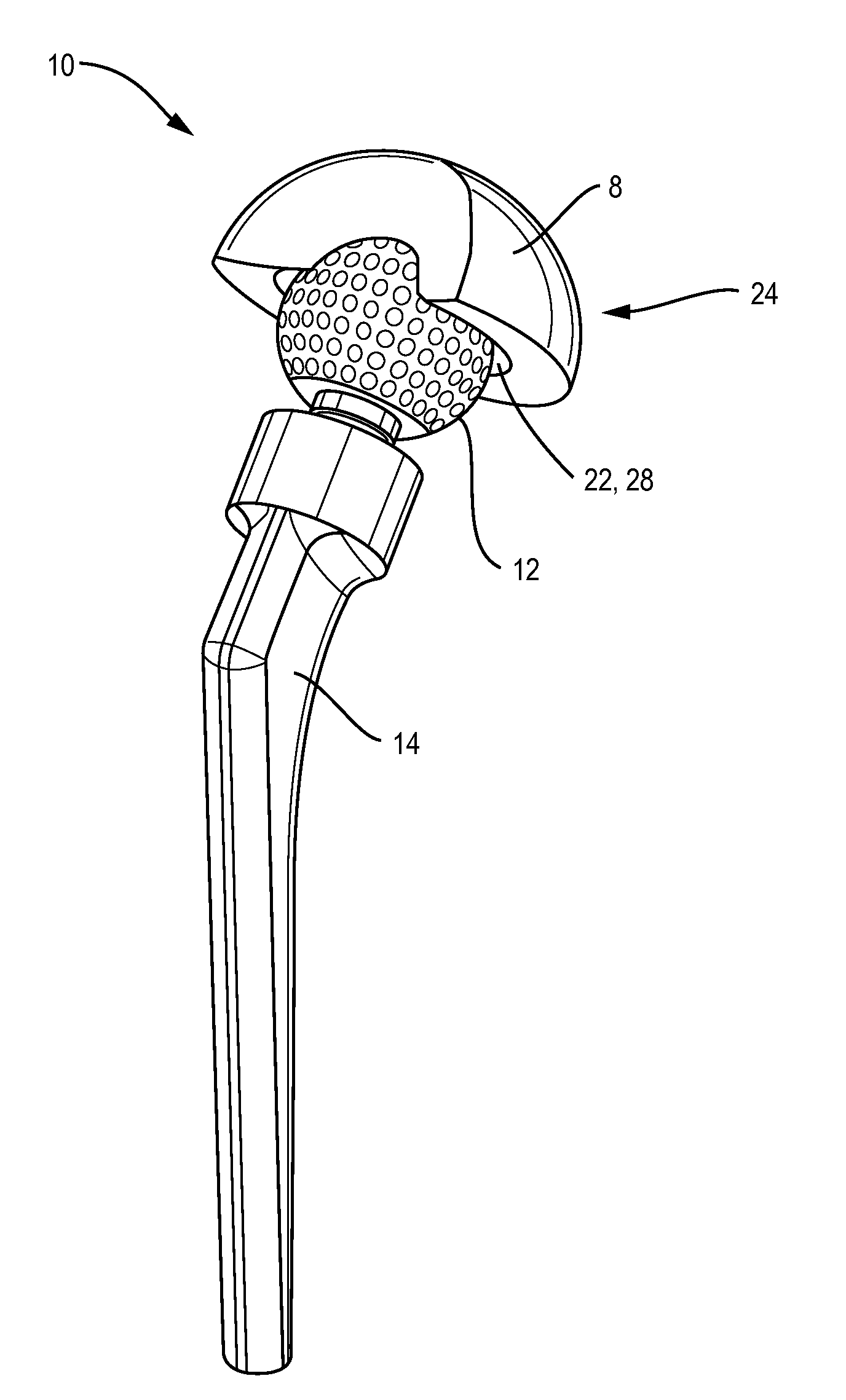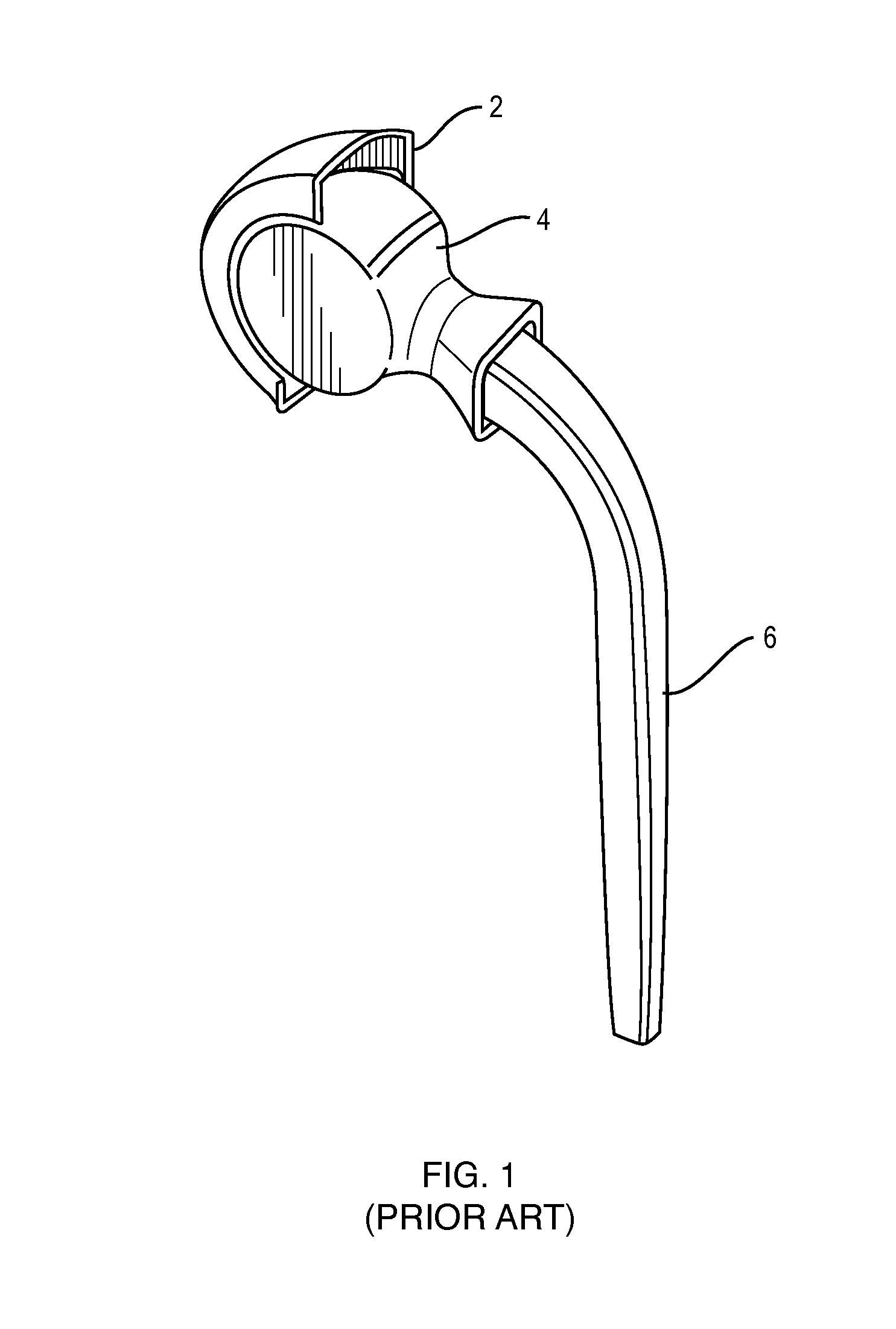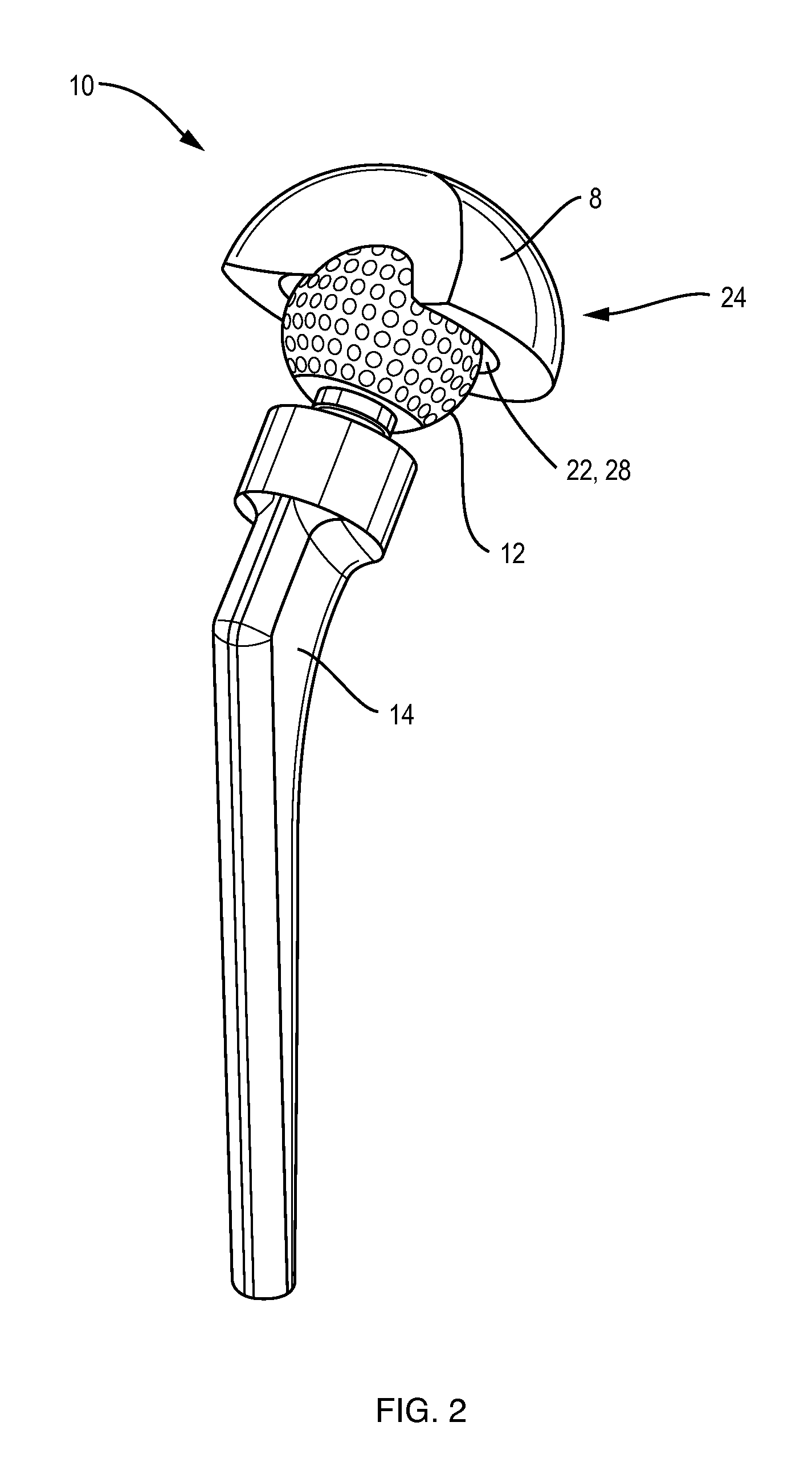Extended life prosthetic hip joint
a prosthetic hip joint and life extension technology, applied in the field of prosthetic hip joints, can solve the problems of failure to wear, wear, and unknown cost of war injuries, and achieve the effect of improving surface roughness and sphericity
- Summary
- Abstract
- Description
- Claims
- Application Information
AI Technical Summary
Benefits of technology
Problems solved by technology
Method used
Image
Examples
Embodiment Construction
[0064]FIG. 2 is perspective view of prosthetic hip joint 10 of the present invention. In this view, we see acetabular cup 8 with acetabular cup surface 22, acetabular cup surface roughness 28, femoral head 12, femoral stem 14, and sphericity 24.
[0065]FIG. 3 is a partial cutaway of femoral head 12 and acetabular cup 8 of the present invention. Femoral head radius A is half of the femoral head diameter. Acetabular cup radius B is half of the acetabular cup diameter. Radial clearance H is the difference between A and B, and is half of the diametric clearance.
[0066]FIG. 4 is a perspective view of preferred femoral head 12 of the present invention, including dimples 18. Dimples 18 are engineered into femoral head surface 16 in a pattern similar to a golf ball. Dimples 18 have depth 20. Although not visible from this view, depth 20 is a measure of the indentation of dimple 18 into femoral head surface 16, away from the viewer. Depth 20 is preferably approximately equal to 2×H, or the diam...
PUM
 Login to View More
Login to View More Abstract
Description
Claims
Application Information
 Login to View More
Login to View More - R&D
- Intellectual Property
- Life Sciences
- Materials
- Tech Scout
- Unparalleled Data Quality
- Higher Quality Content
- 60% Fewer Hallucinations
Browse by: Latest US Patents, China's latest patents, Technical Efficacy Thesaurus, Application Domain, Technology Topic, Popular Technical Reports.
© 2025 PatSnap. All rights reserved.Legal|Privacy policy|Modern Slavery Act Transparency Statement|Sitemap|About US| Contact US: help@patsnap.com



